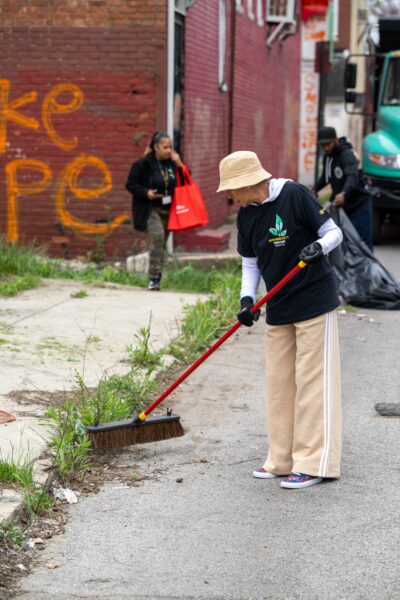Monday evening was final exam time in the engineering building at UMBC. In a basement classroom, students were huddled in groups making final preparations.
When it was time for class to begin, however, professor Marc Olano gave the students the floor. They spoke of a ghost haunting an old theatre, and a fox running through the streets of Civil War-era Baltimore. And the audience wasn’t only their classmates.
In UMBC’s Game Development class, the final is a presentation to video game professionals. This semester, clients were also in the crowd.
Throughout the semester, the 15 students in the class went through the many phases of developing a game, from pitching, to development on a gaming engine and making art, to client feedback.
The result was two games that are ready to be built on for use in real settings. Thanks to grant money from UMBC’s Hrabowksi Fund and the NEA, two students from each team will have a chance to continue to make improvements over the summer.
The class brings together computer science and art students, putting them in a multidisciplinary setting where they have to work on teams, and tailor ideas for actual use in a product.
“The students are in control of their own destiny,” Olano said.
Students seemed to take to the format. Zsade Fleming, one of the key artists on the team behind haunted theatre game “Siggy,” said it was her second time taking the class, and she would take it a third time if she could. Developer Paul Tschirgi, who was from the “Bandit” team, did her one better. It was his third time.
Here is a brief overview of the games that emerged:
Bandit
Built for UMBC history professor Anne Rubin’s class, this PC game is set in Civil War-era Baltimore. Based on the idea pitched by Savannah Myers, players control a fox who is loose on the streets during the Pratt Street Riots, which was an 1861 period of unrest between Massachusetts militiamen passing through Baltimore and anti-war protestors. The fox is on the hunt for documents from the period, which can be examined and even recorded in notes by the players. He is also trying to avoid guards on the streets.
The eight-member team that developed the game used historical maps, and tried to make it as realistic as possible.
As Tschirgi lamented, that meant no explosions. They used Unreal Game Engine, which allowed programmer JR Smith to use the program for the first time.
Rubin said her class has already had a chance to play the game. As a result, she sees a prime opportunity to bring gaming into the learning experience.
Siggy
This mobile game was made to help marketing efforts at the Signature Theatre in Shirlington, Va. The idea came to team member and animator Krista Trostle when she was baking Snickerdoodles, and ended up being a pitch that was developed.
Players control a ghost as he moves through a haunted version of the Signature Theatre, where they collect items and escape from detection.
Programmers built the game on Unity Game Engine. Meanwhile, the artistic team worked with the client to produce a hand-drawn feel, which meant drawing and scanning numerous images, and recreating bold graphic design that the theatre uses on its playbills. They also used blueprints of the theatre to create an accurate layout.
The team had many features that they wanted to add, including levels of the theatre that included a catwalk, and characters that were modeled on real-life theatre employees. But there’s still time, as the artist and programmer who continue to work on the game over the summer will look to add more features.
Join the conversation!
Find news, events, jobs and people who share your interests on Technical.ly's open community Slack

Baltimore daily roundup: Film fest spotlights cinema's immersive frontier; over $1M for a wellness startup; $2B to rebuild the Key Bridge

Baltimore daily roundup: Key takeaways on the local tech ecosystem; a video editor's path to working with Keke Palmer; BCIT's new podcast

Baltimore daily roundup: 20 people building Baltimore's innovation community; a local startup's $15K win; the USMC's new tech office


